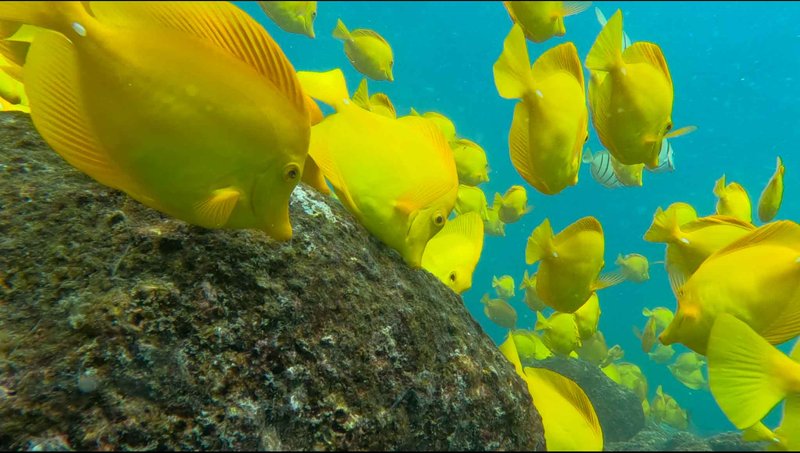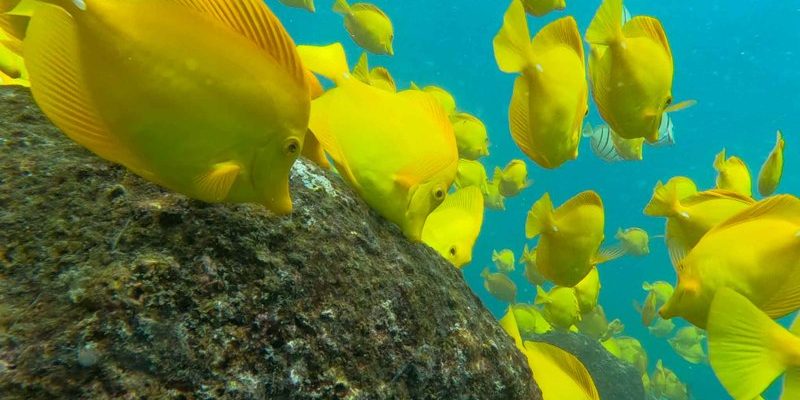
Let’s dive deeper into the evolutionary journey of the Yellow Tang. We’ll explore how this fish evolved, what makes it unique, and why understanding its journey is essential for both marine enthusiasts and conservation efforts. Grab a seat, and let’s explore this journey like we’re sharing stories over coffee.
Understanding the Yellow Tang
The Yellow Tang, scientifically known as *Zebrasoma flavescens*, is a species of surgeonfish that thrives in the warm waters of the Pacific Ocean. These fish are easily recognizable by their bright yellow coloration and distinctive oval shape.
You might be wondering why their color matters in the grand scheme of things. Well, color plays a crucial role in their survival. The Yellow Tang’s vibrant yellow helps them stand out against the colorful coral reefs, making them less vulnerable to predators lurking in the shadows. They also use their color to communicate with each other and establish territory. Essentially, their bright appearance is not just for show; it’s a critical part of their survival strategy.
The Evolutionary Background of the Yellow Tang
To understand the evolutionary journey of the Yellow Tang, we need to go back millions of years. The ancestors of modern surgeonfish began evolving during the late Eocene epoch, around 40 million years ago. That’s a long time, right?
These early fish were adapted to life in the coral reefs, much like our Yellow Tang today. Over time, they developed specific adaptations—like their sharp spines and vibrant colors—that allowed them to thrive in this dynamic environment. The Yellow Tang’s ancestors learned to navigate the intricate coral reefs, feeding on algae and helping to maintain the delicate balance of their ecosystems.
As the climate changed and coral reefs fluctuated, so did the Yellow Tang. They managed to spread across various Pacific islands, adapting to different environments. This resilience is a testament to the power of evolution, showcasing how life can not only survive but flourish in a changing world.
Physical Adaptations of the Yellow Tang
The Yellow Tang is not just a pretty face; it has some remarkable physical adaptations that aid its survival. One of the most notable features is its sharp spines, located on both sides of its tail. These spines serve as a defense mechanism against predators. Imagine having a built-in weapon for protection!
In addition to its spines, the Yellow Tang’s streamlined body allows it to swim gracefully through the reef. This agility is essential for quick escapes from danger and for navigating the complex underwater landscape. They rely on their speed and maneuverability to outsmart predators and stay safe while foraging for their primary food source: algae. This diet is vital as it helps keep the reefs healthy by preventing overgrowth.
Behavioral Traits of the Yellow Tang
The yellow tang is known for its social behavior. These fish often form small groups, or schools, which provide safety in numbers. Being part of a group can help fend off predators. It’s like having a buddy system in the ocean!
Moreover, they exhibit territorial behavior, especially males. When challenged, a male Yellow Tang won’t hesitate to display its vibrant colors and dart toward the intruder. This display is a warning, signaling, “Hey, this is my space!” This behavior showcases their strong instincts and social structures.
For aquarium enthusiasts, understanding these behaviors is crucial for creating a suitable environment. A well-planned tank that mimics their natural habitat will help keep these spirited fish happy and healthy.
The Importance of the Yellow Tang in Its Ecosystem
The Yellow Tang plays a critical role in its ecosystem, particularly in maintaining coral reef health. By feeding on algae, they help prevent algal overgrowth that can suffocate corals and disrupt the delicate balance of marine ecosystems.
In a way, you can think of the Yellow Tang as a gardener of the reef. Just like a gardener prunes plants to keep a garden flourishing, the Yellow Tang keeps algae in check, allowing for diverse marine life to thrive.
Their role is not just ecological; it also has economic implications. Many people are captivated by these fish, making them popular in the aquarium trade. Protecting their populations in the wild ensures a balance between beauty, biodiversity, and conservation.
Conservation Challenges Facing the Yellow Tang
Sadly, despite their resilience, the Yellow Tang faces several threats. Overfishing is one of the most significant challenges. Because they’re highly sought after for aquariums, the demand can lead to population declines. Moreover, environmental changes, such as coral bleaching and climate change, threaten their habitat.
Conservation efforts are crucial. Initiatives to regulate fishing and protect coral reefs are essential to ensure that the Yellow Tang can continue to thrive. And here’s the thing—working together to protect their environment is vital for preserving not just the fish, but the entire marine ecosystem.
Additionally, supporting sustainable aquarium practices can make a difference. If you’re an aquarium enthusiast, consider buying from reputable sources that prioritize ethical collection methods.
The Future of the Yellow Tang
Looking ahead, the future of the Yellow Tang largely depends on conservation efforts and responsible practices. The good news is that awareness about their ecological importance is growing. More people are recognizing how crucial it is to protect marine environments.
Technological advancements in breeding programs also hold promise. Aquaculture, or breeding fish in controlled environments, can help reduce the pressure on wild populations. This approach allows hobbyists to enjoy these beautiful fish while ensuring the natural population remains stable.
In summary, the evolutionary journey of the Yellow Tang is a captivating story of survival and adaptation. By understanding their past and present, we can work together to ensure a future for these incredible fish and the ecosystems they inhabit.
In conclusion, the evolution of the Yellow Tang has shaped not just the species itself, but also the environments they call home. By appreciating their journey, we can foster a sense of responsibility to protect these vibrant fish and the coral reefs they inhabit. Remember, every little effort counts.

